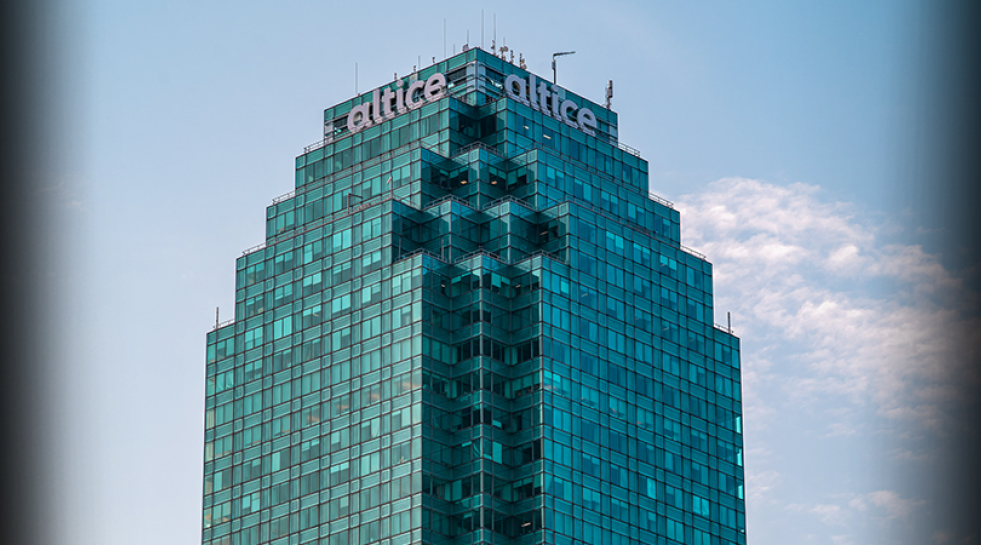Altice USA Shares Fall More Than 20%
Stock hits new 52-week low after year-end broadband subscriber growth goes negative

Altice USA shares fell more than 20% on Thursday, hitting a new 52-week low of $11.26 per share in early trading on February 17, as investors were spooked by disappointing Q4 broadband subscriber results and expected hikes in capital expenditures to finance an accelerated fiber network build.
Altice USA said after market close on Wednesday that it lost about 2,000 broadband subscribers in Q4 and shed 3,000 for the year, results that shouldn’t have come as much of a surprise to investors -- management has been hinting at possible losses for months. But coupled with plans to accelerate its fiber network buildout to cover 6.5 million homes by 2025, and the expected hike in capex that would go hand in hand with that plan, investors decided they had had enough.
Altice stock was down nearly 22% ($3.14 per share) to $11.26 each on Thursday morning, shattering its previous 52-week nadir of $12.87 per share. The shares closed February 17 at $11.83 each, down $2.57 each or 18%.
Also: Analyst Makes Case for Altice USA to Go Private
In a research note, MoffettNathanson senior analyst Craig Moffett wrote that Altice’s Q4 results offered few surprises, but that the bigger picture looks bleak. According to Moffett, Altice isn’t growing broadband subscribers, ARPU for the segment was down sequentially for the first time, wireless growth is well below peers, margins are under pressure, the company went against its past history by declining to provide guidance for the future, and they stopped buying back their own shares.
“Altice investors will have to decide whether these trends can be turned around with higher footprint growth and faster fiber investment,” Moffett wrote. “And Cable investors more broadly will need to decide whether these trends are unique to Altice or a broader harbinger of things to come.”
The smarter way to stay on top of the streaming and OTT industry. Sign up below.
He added that he believes that Altice’s problems can be fixed and appear to be unique to the company, but it won’t be easy.
Altice said Wednesday that it would accelerate the fiber buildout to 6.5 million homes by 2025, a goal that Wells Fargo Securities media analyst Steven Cahall said represents about 65% of Altice’s footprint, adding that currently fiber reaches only about 13% of its homes passed.
Also: Did Altice USA Cut Costs Too Much?
The company said in Q3 that it will spend about $1.7 billion to $1.8 billion in capex in 2022, up from $1.2 billion in 2021. That represents about 18% of revenue at a time when peers like Comcast and Charter are extending their networks but keeping capital intensity low at 11% and 14.1%, respectively.
“Now, Altice’s elevated capex may reflect too many years of under-investment in favor of cash deployment to shareholders, but it's nonetheless looking at competitive intensity today and choosing to skip DOCSIS 4.0 entirely and jump right into fiber,” Cahall wrote, adding that investors should wonder if the rest of the cable industry will need to do the same.
In a research note Thursday, Barclays Group media analyst Kannan Venkateshwar wrote that while the rest of the cable industry is experiencing a slowdown in broadband subscriber growth, Altice is the only major operator showing negative growth metrics. Adding to the concern is that past efforts to return value to shareholders via leveraged share buybacks has driven up its debt-to-cash flow ratio to 5.4 times, giving it little wiggle room “to deal with competitive or idiosyncratic factors.”
“Just a couple of storms or a bit more competition in the company’s footprint could make the balance sheet a much bigger focus than it already is,” Venkateshwar continued. “Therefore, it is likely to be tough to change the narrative on the stock anytime soon unless the company turns around subscriber performance.”
It appears that Altice is convinced that building more fiber, offering higher speeds and better quality will be enough to get the broadband growth engine back on track. In a conference call with analysts to discuss Q4 results, Altice USA CEO Dexter Goei said that most of the broadband losses were in areas where it competed against Verizon Fios, and that the company was beginning to see improvement in those markets in Q4.
On the call, Goei said Verizon Fios wasn’t being as “hypercompetitive” as it was during most of 2021 and has raised its pricing on data.
Prior to February 17, Altice shares were down about 11% for the year, and Goei said management is focused on beefing up the stock price, adding it is a big reason for doubling down on the fiber build.
“Because it is clear in our minds that investing in the infrastructure and upgrading it significantly is going to drive a tremendous amount of value and growth for this business,” Goei said, adding that success will be determined by how well the company is able to execute that plan.
“We just have to continue to execute here and this is a big year of execution,” he continued. “We feel good about our initiatives that we started in the second half of last year. And we feel good about 2022 in terms of executing our operational goals."
Moffett added that while longer term guidance for lower capital intensity and higher margins could be more reassuring to some investors, more important is what will happen over the next year.
“Unfortunately, the near term outlook is cloudy at best,” Moffett wrote.
But the analyst continued that Altice has been down this road before, in its previous life as Cablevision Systems. Back in 2013, Cablevision was considered to be on its last legs, with most of its value already depleted and its industry-leading service penetration rates making the growth prospects grim. But when Altice bought Cablevision in 2016, it showed that by fixing its cost structure, there was more gold to be mined, extending its growth runway by pairing it with an asset Altice had purchased just months before -- Suddenlink Communications.
And though Suddenlink seems to be showing signs of difficulty, Moffett believes they are mostly self-inflicted. And though the fiber buildout and implementing a more rational cost structure isn’t exactly new -- Comcast and Charter are making similar moves -- it probably is the best path to follow.
“They are on their way to becoming a more conventional cable company, albeit one with an FTTH strategy rather than a DOCSIS based strategy,” Moffett wrote. “We’ll never love the legacy Cablevision footprint, but the blended asset mix at Altice is still capable of growing, even if at a slower pace than peers.” ■
Mike Farrell is senior content producer, finance for Multichannel News/B+C, covering finance, operations and M&A at cable operators and networks across the industry. He joined Multichannel News in September 1998 and has written about major deals and top players in the business ever since. He also writes the On The Money blog, offering deeper dives into a wide variety of topics including, retransmission consent, regional sports networks,and streaming video. In 2015 he won the Jesse H. Neal Award for Best Profile, an in-depth look at the Syfy Network’s Sharknado franchise and its impact on the industry.

